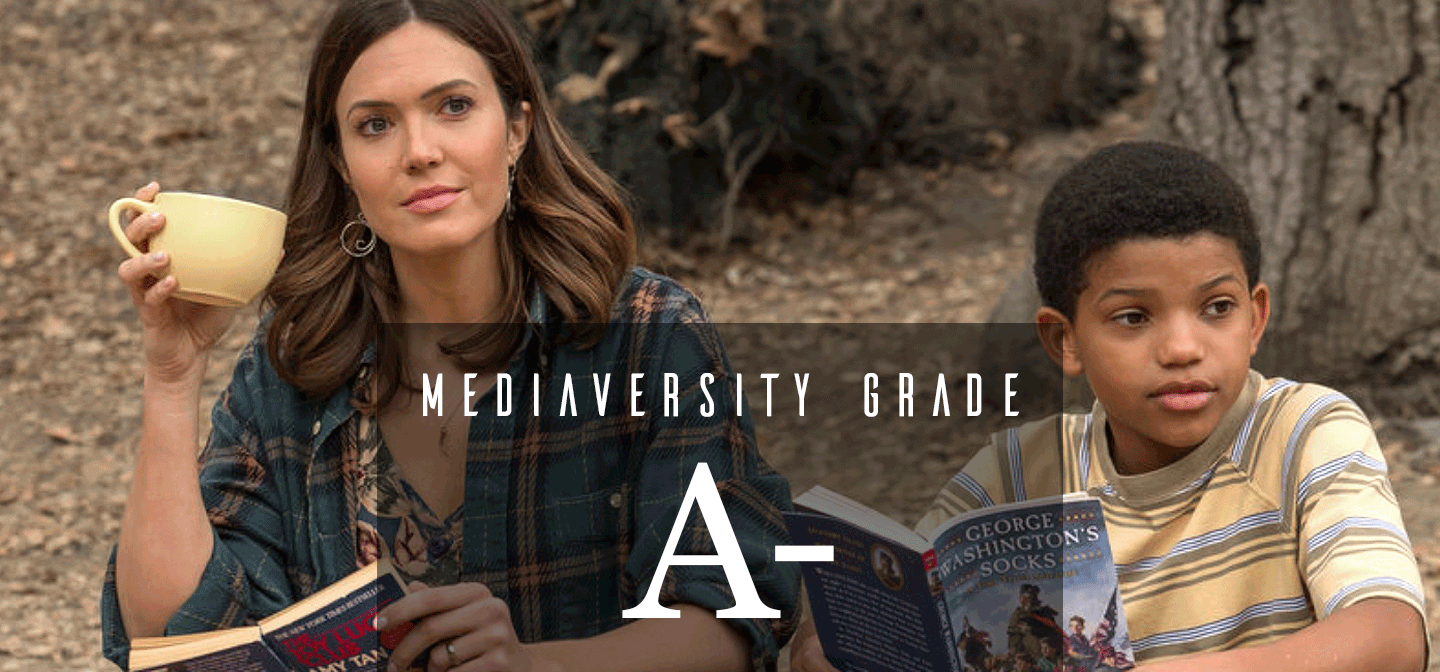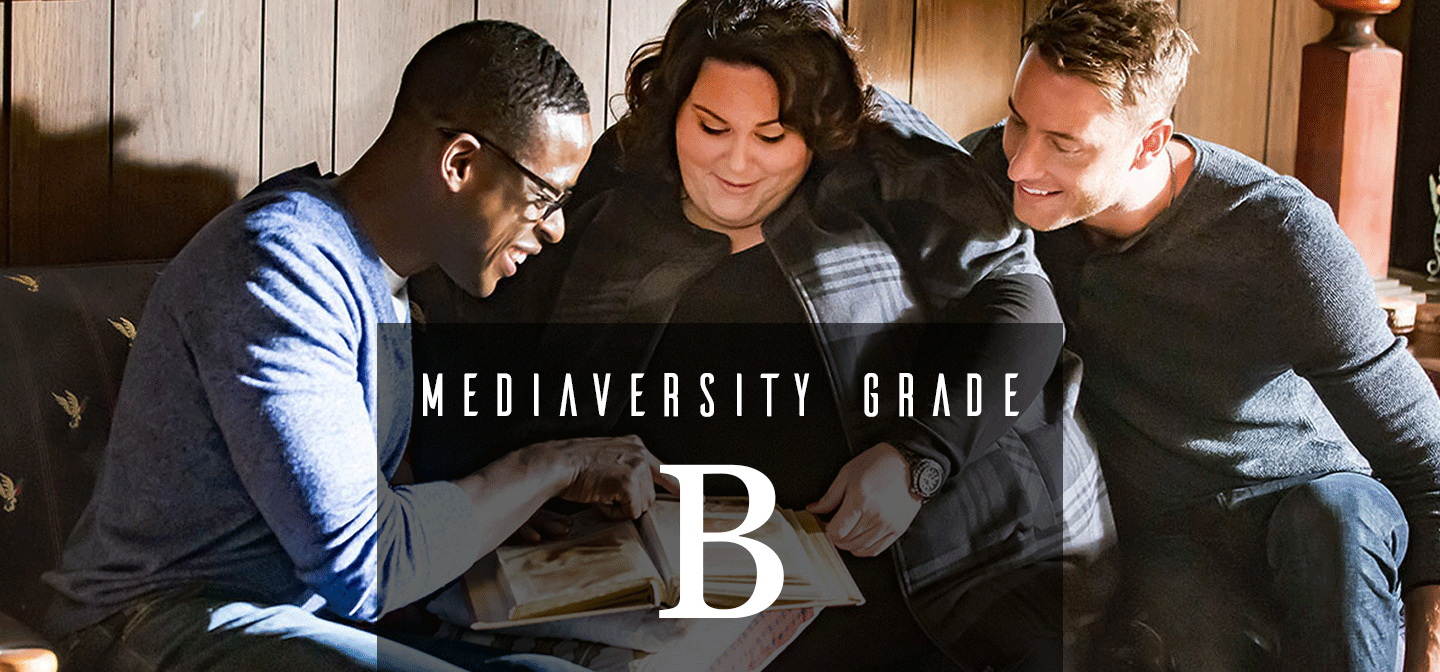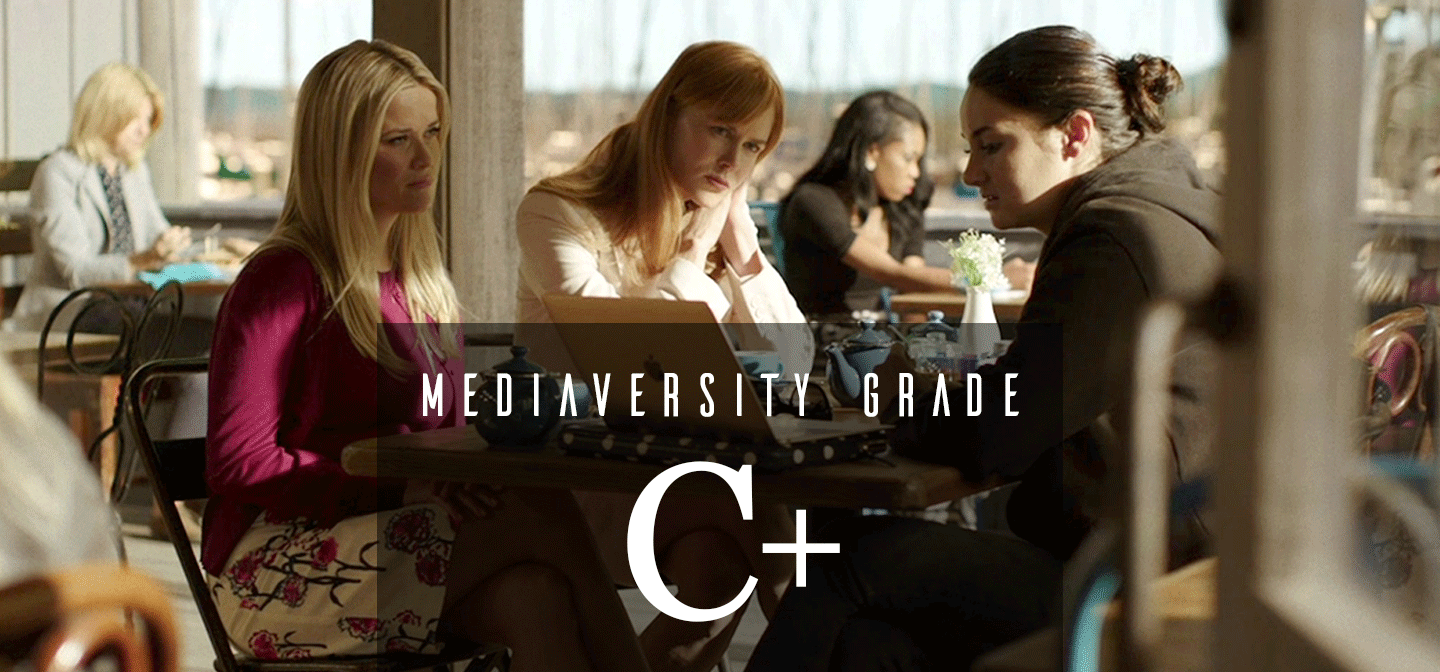This Is Us - Season 2
“This Is Us smashes barriers in its exploration of mental health and addiction.”
Title: This Is Us
Episodes Reviewed: Season 2
Creator: Dan Fogelman 👨🏼🇺🇸
Writers: Dan Fogelman 👨🏼🇺🇸 (3 eps), Isaac Aptaker 👨🏼🇺🇸 (3 eps), Elizabeth Berger 👩🏼🇺🇸 (3 eps), Kay Oyegun 👩🏾🇺🇸 (3 eps), and various (4 ♀, 3 ♂, 1 POC)
Reviewed by Li 👩🏻🇺🇸
Read the Season 1 review here.
Technical: 4/5
Last year, I was a little harsh on This Is Us for being so damned sappy. But through that wet hanky of an inaugural season, showrunner Dan Fogelman successfully establishes the family lore of the Pearsons. It comes as a relief, then, to delve right into the good stuff in Season 2 where family relations—in all their exasperating complications—take front and center.
Some storylines are better than others. Every flashback with the canonized late patriarch, Jack Pearson (Milo Ventimiglia), is saccharine enough to rot teeth. And his entitled son, Kevin (Justin Hartley), never finds empathetic footing despite the exploration of his backstory and insecurities in Season 2. But thanks to more compelling characters like adopted son Randall Pearson (Sterling K. Brown), This Is Us is generally a breeze to watch.
Gender: 4/5
Does it pass the Bechdel Test? YES
Women make up a significant presence in the writers room of This Is Us, and it translates onscreen through integral and complex female characters, even as none venture outside of gender norms. We see wives, mothers, daughters, and young teenagers, but the soul of this show stays rooted heterosexual social systems propelled through marriage.
The closest we get to seeing a progressive woman is Randall’s wife, Beth (Susan Kelechi Watson). Randall quits his job at the end of Season 1, and the story neatly picks up from there as Beth suddenly finds herself bankrolling the family through long days at the office. It’s great to see Randall embrace his role as lead parent to their two young daughters, but this gender role reversal is vehemently temporary. Beth quickly implores Randall to find a job. And even in the episodes that mention her stressful days at work, she is never actually shown outside the home.
Nonetheless, the show gets a bump in this category through the addition of new supporting women. Linda (Debra Jo Rupp) appears as a caring yet seasoned social worker who brings foster daughter Déjà (Lyric Ross) into the lives Randall and Beth Pearson. Déjà and her mother, Shauna (Joy Brunson), are two of the few non-white characters on the show and their introduction helps diversify what is an otherwise white-centric world—something we’ll discuss below as we tackle racial representation.
The series stalwart of matriarch Rebecca Pearson (Mandy Moore) remains important, but it’s her daughter Kate (Chrissy Metz) who grows by leaps and bounds in Season 2. No longer is she the flat caricature of a big girl obsessed with losing weight. One piece to her evolution is the introduction of Madison (Caitlin Thompson), someone Kate initially sees as an obnoxious woman who inexplicably shows up to her group therapy sessions despite being stick-thin and pretty. But thanks to some forced bonding, they develop a believable friendship that takes its time evolving, naturally, over the course of the season.
Race: 4/5
The show’s Black characters and sole recurring Latino, Miguel (played by John Huertas), see major screen time and are warmly embraced in This Is Us. But the lack of social context for Randall and his family feels isolating in a universe populated by white families and supporting characters.
Season 2 gently widens its cultural scope, just enough to let in the new Black characters of young Déjà and her troubled mother, Shauna, who test the strength of Randall and Beth’s relationship through Déjà’s difficult fostering. The progress is undercut, though, by the same-season departure of Randall’s biological father, William (Ron Cephas Jones), who had contributed significantly to the storylines of Season 1. And the fact of Déjà being an at-risk youth, with a single mother who became pregnant at 16—on top of William being a reformed drug addict—feels a bit on the nose.
I will say that the writers do everything within their power to humanize what would normally be seen as stereotypical roles. Shauna begins as an irresponsible mom who gets thrown in jail, leaving her daughter Déjà behind to languish in foster care. But in "This Big, Amazing, Beautiful Life" (Season 2, Episode 17), Shauna’s difficult past gets uncovered and Nigerian American writer Kay Oyegun helps cast her in a sympathetic light.
At the end of the day, though, the bubble surrounding Randall and his family never bursts and they continue to travel as intrepid explorers through white society. Miguel feels like even more of an astronaut, tethered only to Rebecca and Jack Pearson but devoid of any backstory himself.
Other ethnicities lack visibility altogether. While Faithe Herman (who plays Randall’s youngest daughter) is part Filipina, she plays a Black character. From a narrative standpoint, Asians are nonexistent despite the show’s settings in metropolises like Los Angeles, New York City, and Pittsburgh. And you can forget about indigenous or multiracial characters; the interest just isn’t there.
Because of these deeper issues, it doesn’t matter how many scenes This Is Us writers throw at Randall and Beth Pearson, it will still feel surface level. I don’t want to discount the healthy amounts of narrative space devoted to them; but in order to break through, they need to share scenes with the outer world. The writers are fully capable of this. The flashback to Randall’s senior year of high school is a fantastic example, as he toured Howard University and experienced what it was like to be the ethnic majority rather than the minority. The small, single-episode thread was one of my favorite plots of the season, and I hope to see more like it in the future.
Disability: 5/5
One area where This Is Us truly smashes barriers for network television is its exploration of mental health and addiction. Season 1 alludes to Jack’s drinking problem and depicts Randall’s anxiety through a mid-season panic attack, but in Season 2, mental health is at the fore. Jack’s alcoholism manifests in marital problems and lowers his standing in the eyes of his son, Kevin. As an adult, Kevin himself becomes addicted to painkillers and alcohol, as he papers over his own insecurities through the same vices he once derided in his father. These issues are handled in classic, This Is Us fashion: with nearly stifling amounts of empathy, even when I really didn’t feel like empathizing with Kevin who remains frustratingly toxic, hurting all those around him in his self-pity.
This Is Us succeeds so well in painting authentic and varying pictures of mental health precisely because it writes them into main and supporting characters alike. Whether it’s Kate’s personal journey with weight, her husband Toby (Chris Sullivan)’s clinical depression, or Déjà’s autoimmune disease that causes hair loss, the writers understand the ubiquity of mental and physical health issues and weaves them in expertly.
Bonus for Body Diversity: +1.00
I’m so happy to see how far This Is Us has come in terms of body diversity. While Season 1 centers Kate’s characterization solely on her weight, she blossoms into a fully-rendered woman in Season 2 who has dreams of becoming a singer; who befriends a thin girl she starts off hating; who deals with a heartbreaking miscarriage; and who victoriously gets the man of her dreams. Her weight realistically remains an important part of her life, and appears at natural points such as reaching for food as mental crutch during low moments, or being seen obsessively working out for fear that being overweight will cause complications in her pregnancy. But it all takes backseat to more interesting story arcs, and I especially loved seeing Kate interact with others beyond her codependence with her twin brother, Kevin. The moments between Kate and Randall are gentle and loving, while Kate's strength of character come through as she supports “thin girl” Madison through her bulimia. These plotlines all go a long way in redeeming a character who, in Season 1, was almost entirely identified through body issues.
Bonus for LGBTQ: -0.25
When William exited This Is Us, he took the sole representation of queerness with him. Last year, I applauded his refreshing character as an older man of color whose bisexuality was mere facet to multiple layers. Unfortunately, none of that is made up in Season 2, so beyond a past character who happened to be bi—and the few flashbacks we still see of William scattered throughout Season 2—queer representation collapses without him propping it up.
Mediaversity Grade: A- 4.44/5
This Is Us pulls off a strong second season and hits a home run when humanizing issues of mental health and addiction. It has yet to crack the code on portraying modern women, or infusing its characters of color with authenticity. But its heart is in the right place and I’m happy to continue watching showrunner Dan Fogelman take us through important lessons in how to foster empathy for others.
12/31/2020: Updated to reflect current scoring methodology




